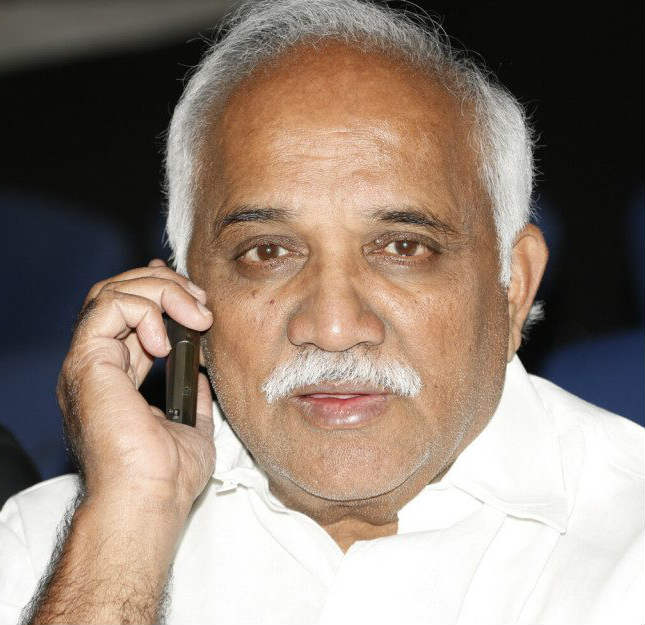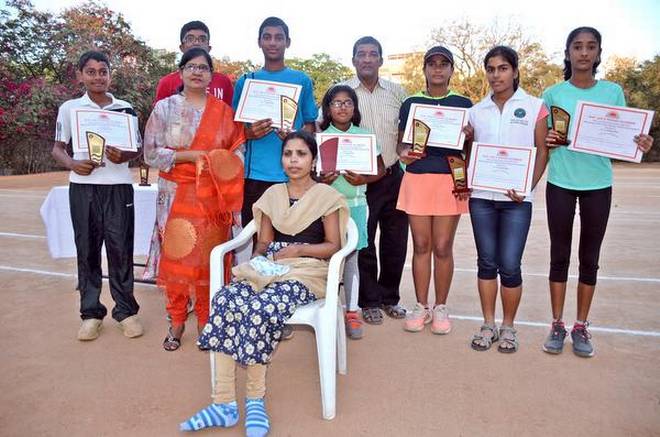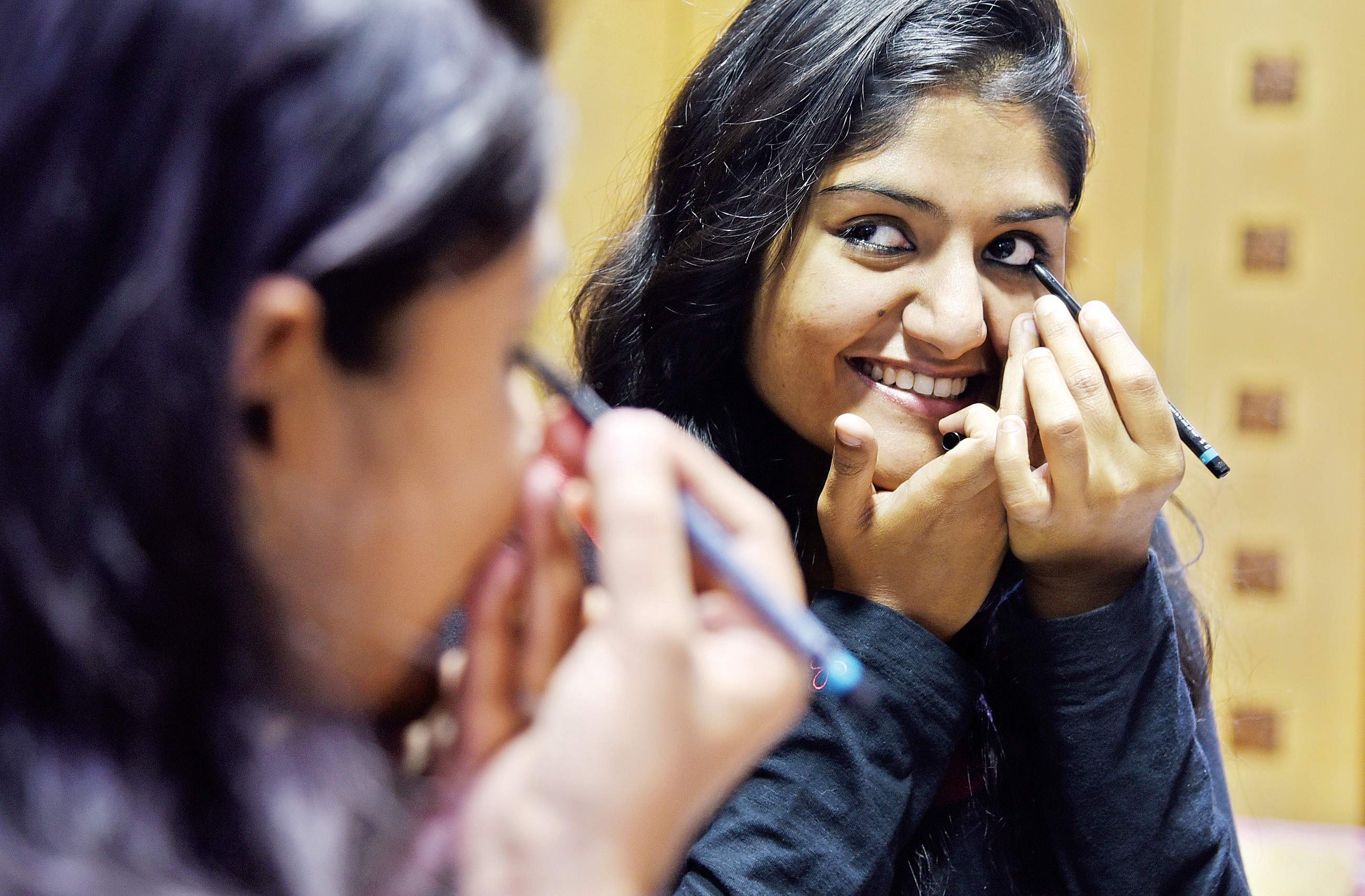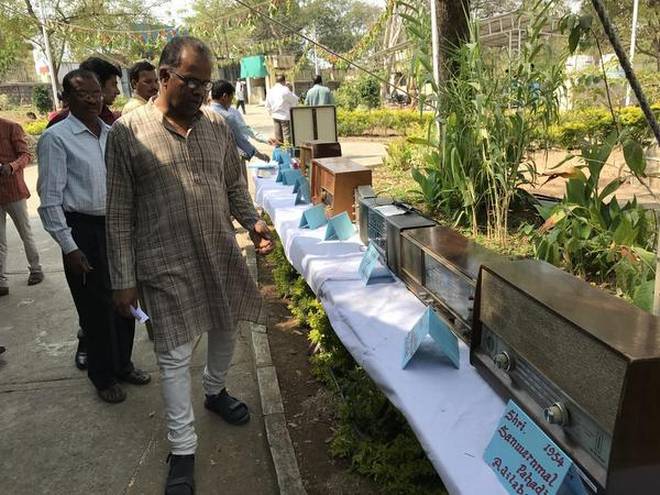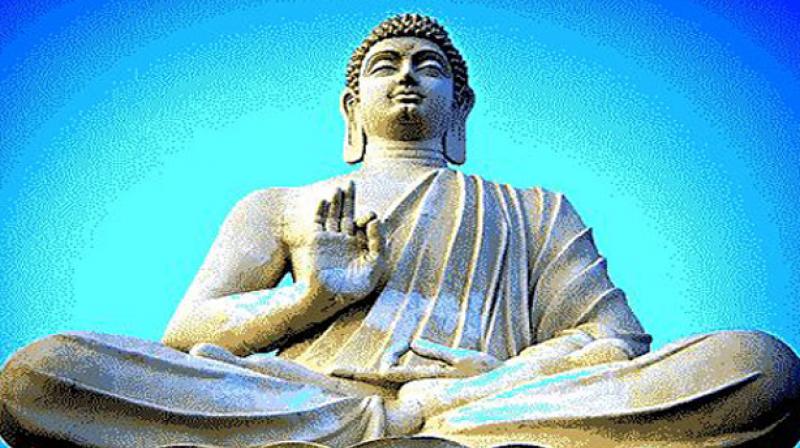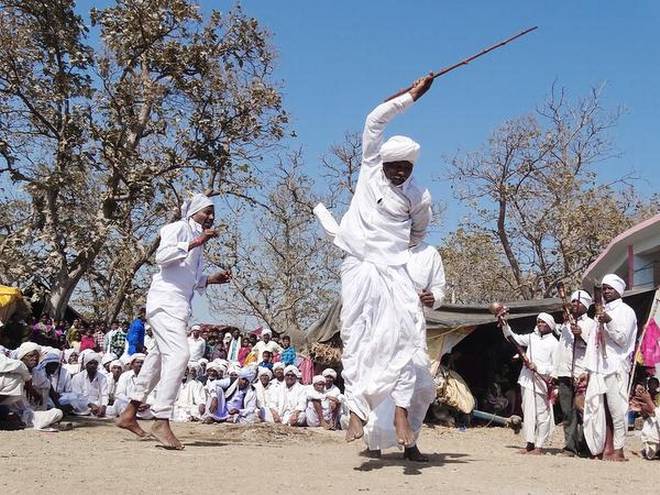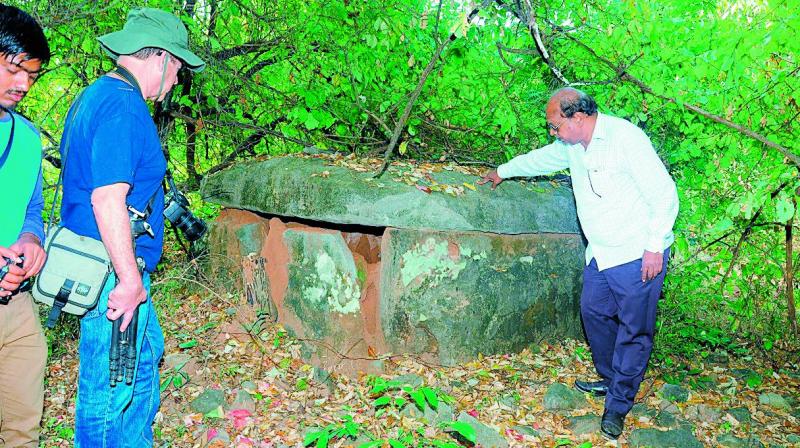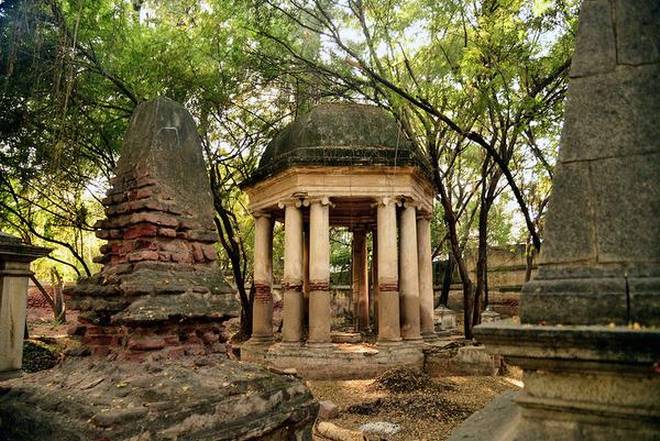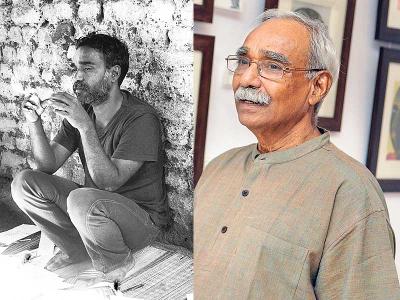
At 75, Thota Vaikuntam is as bright and vibrant as his muses on display at the ongoing retrospective show at the State Gallery of Art. He is quick to smile, happy to accommodate and more than glad to guide. “Apatti gnyapakaalanni vasthunaay” (“All those memories are rushing back to me”), he says when asked to share his thoughts about being amidst a collection of his art works dating back over four decades.
Evidently under the spell of nostalgia, Vaikuntam takes a trip down the memory lane going back to the time when he first landed in Hyderabad in the late sixties to pursue his dream of becoming an artist. How a simple village boy Burugupalli, Karimnagar, ended up becoming one of the one of the most revered artists of Telangana sure makes for an inspiring story. Excerpt from a heart-to-heart with the master painter…
I did sketch, but I did not know that it was called ‘sketching’
Of course, there were questions raised about my choice of going into art. My nangaaru was a businessman, and he did not quite understand my decision to not continue doing something that was profitable. Kaani, nenu Hyderabad ravadaniki art karanam. I wanted to spend my life doing art and nothing else and I was sure of that. When I landed in Hyderabad, however, I did not even know what art meant. Nenu okka palleturu abbai, art antey ento telavadu naaku. I did sketch, but I did not know that it was called sketching (laughs).
I remember the minute I landed here, nenu hostel lo digina. Then I met seniors, including the likes of Laxma (Goud) and (Surya) Prakash, at the College of Fine Arts were so knowledgeable. I was so fascinated listening to people discuss all these “isms” and schools of thoughts that inspired art movements around the world. There was something about those discussions that made me feel proud that a human being could transcend personal limitations and have so many different perspectives in life.
I would just sit and listen to all of them. Of course, there were times when I was mocked: “Neekemi artham avthundi ra?”. (laughs) But that did not stop me from being part of the discussions.
Discussions led to my evolution
I believe those discussions were very, very important in shaping who I am and my art. By the time I had lived six to eight months in the city, I had a fair amount of knowledge about the world of art. Back then art movements in Europe was like a yardstick. So I sat through discussions of Rembrant, Renoir, Cubism of Picasso and more.
Even today, I think that the atmosphere where discussions on art and life are very crucial for the evolution of a cultured society.
Back in the day, we would earn 50 rupees for a painting and that called for a celebration
Kaani appudu (late 1970s) market was very dry. There were times when we had exhibitions, that were held mostly by the government, where we would go and sell our paintings for as less as `100 to `50. Anything beyond that price would mean that noone would buy art.
But the day we sold one canvas, was a day of celebration. Ma santhoshaniki mithi undedi kaadu. All the friends would come together and enjoy so much, you know (laughs).
But it’s not like we looked forward to go buy things or watch movies, it was just like any other day, it was about art and conversations about art. But that one sale made us speak louder and delve deeper into art. The days were like that, back then, life was all about simple pleasures.
Evolution is a continuous process
Now when I look back, the starting point of my journey was curiosity, which led to learning and understanding. Only after that, comes the personal channeling of this understanding and expression. And through all these years, the one thing I know is that you need to keep at it. You need to continue working with your art. Even today when I wake up, the first thing I do is sketch something. If you see, all those artists who continued to work through the years are the ones who are recognised and respected today.
No one can escape economy, we just need to learn to live with it
Of course, the buzz words today are market and marketing. It wasn’t like that back then. Today the number of private art galleries have gone up, art collectors have increased, and so have the number of artists. Then there is this robust environment of promoters, critics, art writers and more. While that is good and even necessary for art and artists to flourish, there is a flipside to it. Art, much like everything else, has become an investment today. Everything is an investment today — gold, land, art, everything. That’s just the way it is.
Earlier, someone earned respect and repute over his/her mastery over an artform, be it music for the musicians, words for the writers and art for the artists. But today, the key seems to be ‘marketing’.
But don’t get me wrong, I am not complaining. I think the point is to live with it… this, the present. Noone can escape economy and live. The best thing to do is find the best way to live in and with all the conditions that we have today.
source: http://www.timesofindia.indiatimes.com / The Times of India / News> City News> Hyderabad News / by Samyuktha K / February 22nd, 2017
